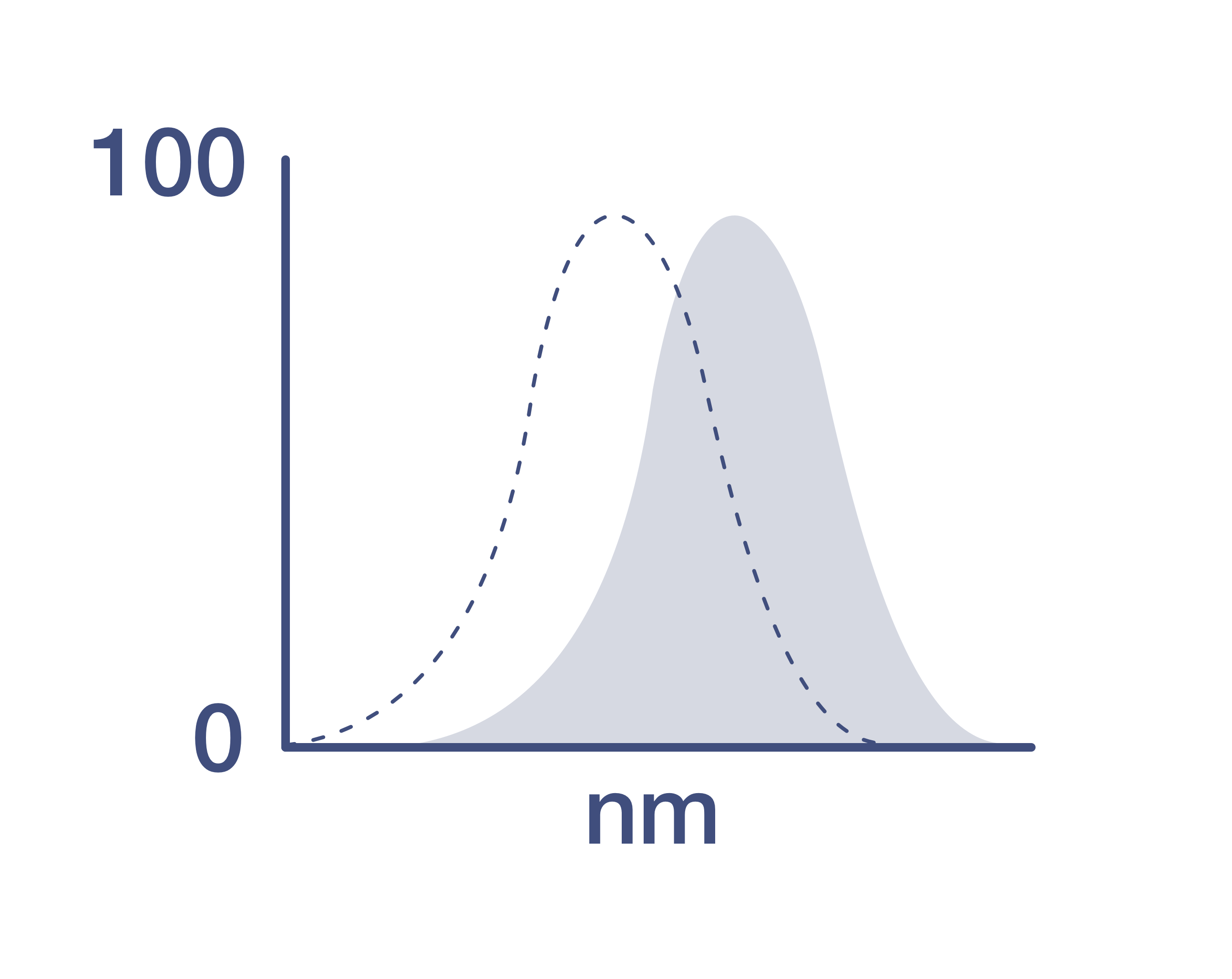Product References
Transient expansion and myofibroblast conversion of adipogenic lineage precursors mediate bone marrow repair after radiation.
JCI insight
Zhong L,Yao L,Holdreith N,Yu W,Gui T,Miao Z,Elkaim Y,Li M,Gong Y,Pacifici M,Maity A,Busch TM,Joeng KS,Cengel K,Seale P,Tong W,Qin L
Published figure using CD45R (B220) monoclonal antibody (Product # 78-0452-82) in Flow Cytometry
Fri Apr 08 00:00:00 EDT 2022
Lenvatinib for effectively treating antiangiogenic drug-resistant nasopharyngeal carcinoma.
Cell death & disease
Sun Q,Wang Y,Ji H,Sun X,Xie S,Chen L,Li S,Zeng W,Chen R,Tang Q,Zuo J,Hou L,Hosaka K,Lu Y,Liu Y,Ye Y,Yang Y
Published figure using CD45R (B220) monoclonal antibody (Product # 78-0452-82) in Flow Cytometry
Fri Aug 19 00:00:00 EDT 2022
Tet-mediated DNA demethylation regulates specification of hematopoietic stem and progenitor cells during mammalian embryogenesis.
Science advances
Ma L,Tang Q,Gao X,Lee J,Lei R,Suzuki M,Zheng D,Ito K,Frenette PS,Dawlaty MM
Published figure using CD45R (B220) monoclonal antibody (Product # 78-0452-82) in Flow Cytometry
Fri Mar 04 00:00:00 EST 2022
Sphk2 deletion is involved in structural abnormalities and Th17 response but does not aggravate colon inflammation induced by sub-chronic stress.
Scientific reports
Martín-Hernández D,Gutiérrez IL,González-Prieto M,MacDowell KS,Robledo-Montaña J,Tendilla-Beltrán H,Calleja-Rodríguez N,Bris ÁG,Ulecia-Morón C,Moreno B,Caso JR,García-Bueno B,Rodrigues-Mascarenhas S,Marín-Jiménez I,Leza JC,Menchén L
Published figure using CD45R (B220) monoclonal antibody (Product # 78-0452-82) in Flow Cytometry
Tue Mar 08 00:00:00 EST 2022
Aged hematopoietic stem cells are refractory to bloodborne systemic rejuvenation interventions.
The Journal of experimental medicine
Ho TT,Dellorusso PV,Verovskaya EV,Bakker ST,Flach J,Smith LK,Ventura PB,Lansinger OM,Hérault A,Zhang SY,Kang YA,Mitchell CA,Villeda SA,Passegué E
Published figure using CD45R (B220) monoclonal antibody (Product # 78-0452-82) in Flow Cytometry
Mon Jul 05 00:00:00 EDT 2021
Monocyte-derived dendritic cells link localized secretory IgA deficiency to adaptive immune activation in COPD.
Mucosal immunology
Richmond BW,Mansouri S,Serezani A,Novitskiy S,Blackburn JB,Du RH,Fuseini H,Gutor S,Han W,Schaff J,Vasiukov G,Xin MK,Newcomb DC,Jin L,Blackwell TS,Polosukhin VV
Published figure using CD45R (B220) monoclonal antibody (Product # 78-0452-82) in Immunohistochemistry
Mon Mar 01 00:00:00 EST 2021
A rapid CRISPR competitive assay for in vitro and in vivo discovery of potential drug targets affecting the hematopoietic system.
Computational and structural biotechnology journal
Shen Y,Jiang L,Iyer VS,Raposo B,Dubnovitsky A,Boddul SV,Kasza Z,Wermeling F
Published figure using CD45R (B220) monoclonal antibody (Product # 78-0452-82) in Flow Cytometry
Wed Nov 10 00:00:00 EST 2021
Murine myeloid cell MCPIP1 suppresses autoimmunity by regulating B-cell expansion and differentiation.
Disease models & mechanisms
Dobosz E,Lorenz G,Ribeiro A,Würf V,Wadowska M,Kotlinowski J,Schmaderer C,Potempa J,Fu M,Koziel J,Lech M
Published figure using CD45R (B220) monoclonal antibody (Product # 78-0452-82) in Immunohistochemistry
Thu Mar 18 00:00:00 EDT 2021
Defining the Mechanistic Correlates of Protection Conferred by Whole-Cell Vaccination against Pseudomonas aeruginosa Acute Murine Pneumonia.
Infection and immunity
Sen-Kilic E,Blackwood CB,Huckaby AB,Horspool AM,Weaver KL,Malkowski AC,Witt WT,Bevere JR,Damron FH,Barbier M
Published figure using CD45R (B220) monoclonal antibody (Product # 78-0452-82) in Flow Cytometry
Tue Jan 19 00:00:00 EST 2021
Polyvinyl alcohol hydrolysis rate and molecular weight influence human and murine HSC activity ex vivo.
Stem cell research
Sudo K,Yamazaki S,Wilkinson AC,Nakauchi H,Nakamura Y
Published figure using CD45R (B220) monoclonal antibody (Product # 78-0452-82) in Flow Cytometry
Fri Oct 01 00:00:00 EDT 2021
Role of CXCL5 in Regulating Chemotaxis of Innate and Adaptive Leukocytes in Infected Lungs Upon Pulmonary Influenza Infection.
Frontiers in immunology
Guo L,Li N,Yang Z,Li H,Zheng H,Yang J,Chen Y,Zhao X,Mei J,Shi H,Worthen GS,Liu L
Published figure using CD45R (B220) monoclonal antibody (Product # 78-0452-82) in Immunohistochemistry
Tue Feb 08 00:00:00 EST 2022
Hypoxia-induced miR-210 modulates the inflammatory response and fibrosis upon acute ischemia.
Cell death & disease
Zaccagnini G,Greco S,Longo M,Maimone B,Voellenkle C,Fuschi P,Carrara M,Creo P,Maselli D,Tirone M,Mazzone M,Gaetano C,Spinetti G,Martelli F
Published figure using CD45R (B220) monoclonal antibody (Product # 78-0452-82) in Immunohistochemistry
Sat May 01 00:00:00 EDT 2021
Ibrutinib does not prevent kidney fibrosis following acute and chronic injury.
Scientific reports
Belliere J,Casemayou A,Colliou E,El Hachem H,Kounde C,Piedrafita A,Feuillet G,Schanstra JP,Faguer S
Published figure using CD45R (B220) monoclonal antibody (Product # 78-0452-82) in Immunohistochemistry
Mon Jun 07 00:00:00 EDT 2021
High-throughput analysis of lung immune cells in a combined murine model of agriculture dust-triggered airway inflammation with rheumatoid arthritis.
PloS one
Gaurav R,Mikuls TR,Thiele GM,Nelson AJ,Niu M,Guda C,Eudy JD,Barry AE,Wyatt TA,Romberger DJ,Duryee MJ,England BR,Poole JA
Published figure using CD45R (B220) monoclonal antibody (Product # 78-0452-82) in Immunohistochemistry
Thu Jul 08 00:00:00 EDT 2021
Proteostasis in dendritic cells is controlled by the PERK signaling axis independently of ATF4.
Life science alliance
Mendes A,Gigan JP,Rodriguez Rodrigues C,Choteau SA,Sanseau D,Barros D,Almeida C,Camosseto V,Chasson L,Paton AW,Paton JC,Argüello RJ,Lennon-Duménil AM,Gatti E,Pierre P
Published figure using CD45R (B220) monoclonal antibody (Product # 78-0452-82) in Immunohistochemistry
Mon Feb 01 00:00:00 EST 2021
Impaired HA-specific T follicular helper cell and antibody responses to influenza vaccination are linked to inflammation in humans.
eLife
Hill DL,Whyte CE,Innocentin S,Lee JL,Dooley J,Wang J,James EA,Lee JC,Kwok WW,Zand MS,Liston A,Carr EJ,Linterman MA
Published figure using CD45R (B220) monoclonal antibody (Product # 78-0452-82) in Flow Cytometry
Tue Nov 02 00:00:00 EDT 2021
Metabolic preconditioning in CD4+ T cells restores inducible immune tolerance in lupus-prone mice.
JCI insight
Wilson CS,Stocks BT,Hoopes EM,Rhoads JP,McNew KL,Major AS,Moore DJ
Published figure using CD45R (B220) monoclonal antibody (Product # 78-0452-82) in Flow Cytometry
Fri Oct 08 00:00:00 EDT 2021
The folate cycle enzyme MTHFD2 induces cancer immune evasion through PD-L1 up-regulation.
Nature communications
Shang M,Yang H,Yang R,Chen T,Fu Y,Li Y,Fang X,Zhang K,Zhang J,Li H,Cao X,Gu J,Xiao J,Zhang Q,Liu X,Yu Q,Wang T
Published figure using CD45R (B220) monoclonal antibody (Product # 78-0452-82) in Flow Cytometry
Mon Mar 29 00:00:00 EDT 2021
Type 2 diabetic mice enter a state of spontaneous hibernation-like suspended animation following accumulation of uric acid.
The Journal of biological chemistry
Zhao Y,Cheng R,Zhao Y,Ge W,Yang Y,Ding Z,Xu X,Wang Z,Wu Z,Zhang J
Published figure using CD45R (B220) monoclonal antibody (Product # 78-0452-82) in Flow Cytometry
Fri Oct 01 00:00:00 EDT 2021
Targeting Ovarian Carcinoma with TSP-1:CD47 Antagonist TAX2 Activates Anti-Tumor Immunity.
Cancers
Jeanne A,Sarazin T,Charlé M,Moali C,Fichel C,Boulagnon-Rombi C,Callewaert M,Andry MC,Diesis E,Delolme F,Rioult D,Dedieu S
Published figure using CD45R (B220) monoclonal antibody (Product # 78-0452-82) in Immunohistochemistry
Thu Oct 07 00:00:00 EDT 2021
Histone deacetylase 3 represses cholesterol efflux during CD4+ T-cell activation.
eLife
Wilfahrt D,Philips RL,Lama J,Kizerwetter M,Shapiro MJ,McCue SA,Kennedy MM,Rajcula MJ,Zeng H,Shapiro VS
Published figure using CD45R (B220) monoclonal antibody (Product # 78-0452-82) in Protein Assays and Analysis
Thu Dec 02 00:00:00 EST 2021
Mechanism of a COVID-19 nanoparticle vaccine candidate that elicits a broadly neutralizing antibody response to SARS-CoV-2 variants.
Science advances
Zhang YN,Paynter J,Sou C,Fourfouris T,Wang Y,Abraham C,Ngo T,Zhang Y,He L,Zhu J
Published figure using CD45R (B220) monoclonal antibody (Product # 78-0452-82) in Immunohistochemistry (Frozen)
Fri Oct 22 00:00:00 EDT 2021
SARS-CoV-2 mRNA Vaccines Foster Potent Antigen-Specific Germinal Center Responses Associated with Neutralizing Antibody Generation.
Immunity
Lederer K,Castaño D,Gómez Atria D,Oguin TH,Wang S,Manzoni TB,Muramatsu H,Hogan MJ,Amanat F,Cherubin P,Lundgreen KA,Tam YK,Fan SHY,Eisenlohr LC,Maillard I,Weissman D,Bates P,Krammer F,Sempowski GD,Pardi N,Locci M
Published figure using CD45R (B220) monoclonal antibody (Product # 78-0452-82) in Flow Cytometry
Tue Dec 15 00:00:00 EST 2020
Deregulated Notch and Wnt signaling activates early-stage myeloid regeneration pathways in leukemia.
The Journal of experimental medicine
Kang YA,Pietras EM,Passegué E
Published figure using CD45R (B220) monoclonal antibody (Product # 78-0452-82) in Flow Cytometry
Mon Mar 02 00:00:00 EST 2020
Synergistic factors control kinase-phosphatase organization in B-cells engaged with supported bilayers.
Molecular biology of the cell
Núñez MF,Wisser K,Veatch SL
Published figure using CD45R (B220) monoclonal antibody (Product # 78-0452-82) in Immunocytochemistry
Thu Mar 19 00:00:00 EDT 2020
Pituitary Adenylate Cyclase-Activating Polypeptide Alleviates Intestinal, Extra-Intestinal and Systemic Inflammatory Responses during Acute Campylobacter jejuni-induced Enterocolitis in Mice.
Pathogens (Basel, Switzerland)
Heimesaat MM,Mousavi S,Kløve S,Genger C,Weschka D,Tamas A,Reglodi D,Bereswill S
Published figure using CD45R (B220) monoclonal antibody (Product # 78-0452-82) in Immunohistochemistry (Paraffin)
Wed Sep 30 00:00:00 EDT 2020
Pituitary Adenylate Cyclase-Activating Polypeptide Alleviates Intestinal, Extra-Intestinal and Systemic Inflammatory Responses during Acute Campylobacter jejuni-induced Enterocolitis in Mice.
Pathogens (Basel, Switzerland)
Heimesaat MM,Mousavi S,Kløve S,Genger C,Weschka D,Tamas A,Reglodi D,Bereswill S
Published figure using CD45R (B220) monoclonal antibody (Product # 78-0452-82) in Immunohistochemistry (Paraffin)
Wed Sep 30 00:00:00 EDT 2020
The lysophospholipase D enzyme Gdpd3 is required to maintain chronic myelogenous leukaemia stem cells.
Nature communications
Naka K,Ochiai R,Matsubara E,Kondo C,Yang KM,Hoshii T,Araki M,Araki K,Sotomaru Y,Sasaki K,Mitani K,Kim DW,Ooshima A,Kim SJ
Published figure using CD45R (B220) monoclonal antibody (Product # 78-0452-82) in Flow Cytometry
Thu Sep 17 00:00:00 EDT 2020
Toll-Like Receptor-4 Dependent Intestinal and Systemic Sequelae Following Peroral Campylobacter coli Infection of IL10 Deficient Mice Harboring a Human Gut Microbiota.
Pathogens (Basel, Switzerland)
Kløve S,Genger C,Mousavi S,Weschka D,Bereswill S,Heimesaat MM
Published figure using CD45R (B220) monoclonal antibody (Product # 78-0452-82) in Immunohistochemistry
Mon May 18 00:00:00 EDT 2020
Ischemia Reperfusion Injury Triggers CXCL13 Release and B-Cell Recruitment After Allogenic Kidney Transplantation.
Frontiers in immunology
Kreimann K,Jang MS,Rong S,Greite R,von Vietinghoff S,Schmitt R,Bräsen JH,Schiffer L,Gerstenberg J,Vijayan V,Dittrich-Breiholz O,Wang L,Karsten CM,Gwinner W,Haller H,Immenschuh S,Gueler F
Published figure using CD45R (B220) monoclonal antibody (Product # 78-0452-82) in Immunohistochemistry
Mon Apr 12 00:00:00 EDT 2021
Overcoming Immunological Challenges to Helper-Dependent Adenoviral Vector-Mediated Long-Term CFTR Expression in Mouse Airways.
Genes
Cao H,Duan R,Hu J
Published figure using CD45R (B220) monoclonal antibody (Product # 78-0452-82) in Immunohistochemistry
Mon May 18 00:00:00 EDT 2020
Myeloid Cell CK2 Regulates Inflammation and Resistance to Bacterial Infection.
Frontiers in immunology
Larson SR,Bortell N,Illies A,Crisler WJ,Matsuda JL,Lenz LL
Published figure using CD45R (B220) monoclonal antibody (Product # 78-0452-82) in Flow Cytometry
Tue Jul 27 00:00:00 EDT 2021
Shp1 Loss Enhances Macrophage Effector Function and Promotes Anti-Tumor Immunity.
Frontiers in immunology
Myers DR,Abram CL,Wildes D,Belwafa A,Welsh AMN,Schulze CJ,Choy TJ,Nguyen T,Omaque N,Hu Y,Singh M,Hansen R,Goldsmith MA,Quintana E,Smith JAM,Lowell CA
Published figure using CD45R (B220) monoclonal antibody (Product # 78-0452-82) in Flow Cytometry
Mon Jun 14 00:00:00 EDT 2021
Fucoxanthin Ameliorates Atopic Dermatitis Symptoms by Regulating Keratinocytes and Regulatory Innate Lymphoid Cells.
International journal of molecular sciences
Natsume C,Aoki N,Aoyama T,Senda K,Matsui M,Ikegami A,Tanaka K,Azuma YT,Fujita T
Published figure using CD45R (B220) monoclonal antibody (Product # 78-0452-82) in Immunohistochemistry
Sun Mar 22 00:00:00 EDT 2020
The Host-Specific Intestinal Microbiota Composition Impacts Campylobacter coli Infection in a Clinical Mouse Model of Campylobacteriosis.
Pathogens (Basel, Switzerland)
Heimesaat MM,Genger C,Klove S,Weschka D,Mousavi S,Bereswill S
Published figure using CD45R (B220) monoclonal antibody (Product # 78-0452-82) in Immunohistochemistry
Tue Sep 29 00:00:00 EDT 2020
Cep55 overexpression promotes genomic instability and tumorigenesis in mice.
Communications biology
Sinha D,Nag P,Nanayakkara D,Duijf PHG,Burgess A,Raninga P,Smits VAJ,Bain AL,Subramanian G,Wall M,Finnie JW,Kalimutho M,Khanna KK
Published figure using CD45R (B220) monoclonal antibody (Product # 78-0452-82) in Immunohistochemistry
Wed Oct 21 00:00:00 EDT 2020
Analysis of Myeloid Cells in Mouse Tissues with Flow Cytometry.
STAR protocols
Liu Z,Gu Y,Shin A,Zhang S,Ginhoux F
Published figure using CD45R (B220) monoclonal antibody (Product # 78-0452-82) in Flow Cytometry
Fri Jun 19 00:00:00 EDT 2020
Aging-Affected MSC Functions and Severity of Periodontal Tissue Destruction in a Ligature-Induced Mouse Periodontitis Model.
International journal of molecular sciences
Aung KT,Akiyama K,Kunitomo M,Mun AY,Tosa I,Nguyen HTT,Zhang J,Kohno T,Ono M,Hara ES,Kuboki T
Published figure using CD45R (B220) monoclonal antibody (Product # 78-0452-82) in Immunocytochemistry
Fri Oct 30 00:00:00 EDT 2020
Requirements for the differentiation of innate T-bethigh memory-phenotype CD4+ T lymphocytes under steady state.
Nature communications
Kawabe T,Yi J,Kawajiri A,Hilligan K,Fang D,Ishii N,Yamane H,Zhu J,Jankovic D,Kim KS,Trinchieri G,Sher A
Published figure using CD45R (B220) monoclonal antibody (Product # 78-0452-82) in Immunohistochemistry
Mon Jul 06 00:00:00 EDT 2020
Bacteroides fragilis polysaccharide A induces IL-10 secreting B and T cells that prevent viral encephalitis.
Nature communications
Ramakrishna C,Kujawski M,Chu H,Li L,Mazmanian SK,Cantin EM
Published figure using CD45R (B220) monoclonal antibody (Product # 78-0452-82) in Flow Cytometry
Tue May 14 00:00:00 EDT 2019
The Hematopoietic Oxidase NOX2 Regulates Self-Renewal of Leukemic Stem Cells.
Cell reports
Adane B,Ye H,Khan N,Pei S,Minhajuddin M,Stevens BM,Jones CL,D'Alessandro A,Reisz JA,Zaberezhnyy V,Gasparetto M,Ho TC,Kelly KK,Myers JR,Ashton JM,Siegenthaler J,Kume T,Campbell EL,Pollyea DA,Becker MW,Jordan CT
Published figure using CD45R (B220) monoclonal antibody (Product # 78-0452-82) in Flow Cytometry
Tue Apr 02 00:00:00 EDT 2019
Mitophagy in Intestinal Epithelial Cells Triggers Adaptive Immunity during Tumorigenesis.
Cell
Ziegler PK,Bollrath J,Pallangyo CK,Matsutani T,Canli Ö,De Oliveira T,Diamanti MA,Müller N,Gamrekelashvili J,Putoczki T,Horst D,Mankan AK,Öner MG,Müller S,Müller-Höcker J,Kirchner T,Slotta-Huspenina J,Taketo MM,Reinheckel T,Dröse S,Larner AC,Wels WS,Ernst M,Greten TF,Arkan MC,Korn T,Wirth D,Greten FR
Published figure using CD45R (B220) monoclonal antibody (Product # 78-0452-82) in Flow Cytometry
Thu Jun 28 00:00:00 EDT 2018

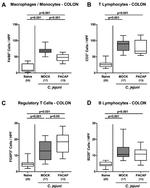
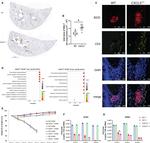



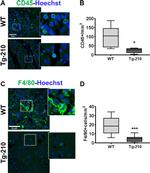



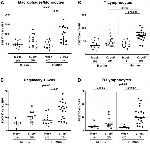
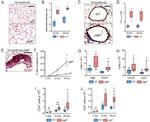
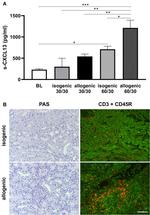

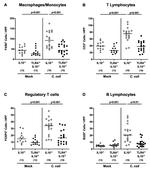







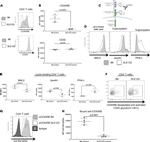




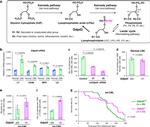
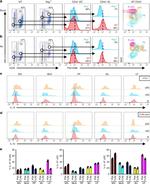


![]() protein phosphatase
protein phosphatase
![]() protein modifying enzyme
protein modifying enzyme




